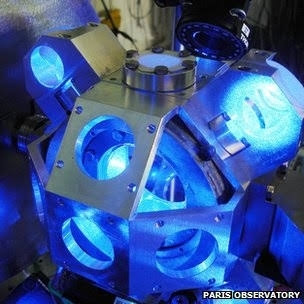Properties of light had been a topic of discussion for a long time. It started back to Democritus (5th century BC) continued to Newton and ended at Maxwell and Einstein. Quantum mechanics is vast branch which incorporate quantisation of energy, wave-particle duality, the uncertainty principle etc. Here I will focus majorly on wave-particle duality of light. Now, what does this term mean? It states that every particle weather light or electron exhibit both wave and particle nature.
Actually, earlier some scientists believed that light shows particle nature and some believed on wave nature. But later with the work of many prominent physicists it was proved that light shows both wave and particle nature. In 1670 Isaac Newton developed corpuscular theory of light. He said that as light follows rectilinear propagation it must be composes of particles as only particles could travel in perfectly straight lines. Newton argues that reflection and refraction are possible only because light is composed of particles. At the time when Newton was confident of his corpuscular theory Robert Hooke and Christian Huygens explained the wave nature of light. According to Huygens principle ‘Each point of the wavefront is the source of a secondary disturbance and the wavelets emanating from these points spread out in all directions with the speed of wave. After this the wave nature was further proved by Thomas Young's famous double slit experiment. Polarisation of light, black body radiation could also be explained with the help of wave nature.
Around 19th century the wave model was well established. But we know that wave requires a medium to propagate but light can travel through vacuum also. How is this possible? This problem was solved by James Clerk Maxwell around 1855 with the help of his electromagnetic theory of light. The changing electric and magnetic field result in the propagation of electromagnetic waves in vacuum. In 1900 Max Planck gave his theory which said that radiation emitted or absorbed occurs in the form of small packets known as quantum and energy of these packets is proportional to the frequency. He gave the equation as E=hf where he is plank's constant(6.626×10^-34 J-sec). By using plank’s quantum theory Einstein in 1905 successfully explained the photoelectric effect. When a light of certain frequency is allowed to fall on a metal of low ionization energy the electrons emitted known as photoelectrons and this phenomenon is known as photoelectric effect.
Observation given by:
1) On increasing the frequency of light kinetic energy of electrons increase.
2) On increasing the intensity of light number of photoelectrons increases however kinetic energy remains constant.
This experiment showed that light consist of particle. These particles are called photon. Einstein was also awarded Noble prize for discovering photoelectric effect. Later in 1924 Louis-victor de Broglie said that all matter has wave nature. He gave the formula ƛ=h/p where p is momentum. For this he was awarded with noble prize in 1929.
With the efforts of prominent scientists like Newton, Huygens, Young, Bohr, Plank, Maxwell, de-Broglie, Einstein etc, it was proved that light shows both particle and wave nature. To verify one phenomena we need particle nature and for another we need wave nature. Together they explain all the phenomenon of light.












